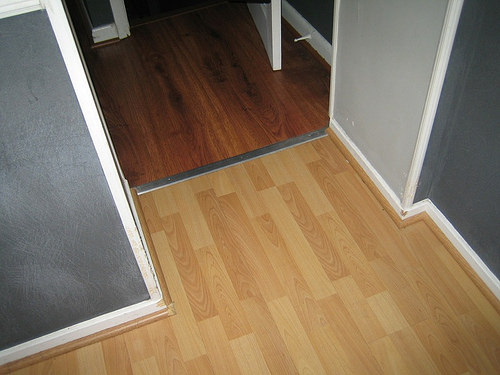Have Questions? Call: (416) 840-2680
REQUEST A QUOTE




Are you planning to renovate or remodel your basement? If so, have you given any thought to the type of flooring you will use? If you have done your research, you will know that only engineered wood and laminate flooring can be installed in sub-grade areas such as basements. If you prefer laminate, today we’re going to be looking at the ways you can prepare your basement to accept this type of flooring.
#1. Know What You’re Working With
Before you choose the actual laminate you’ll be using, you need a clear idea of the condition of your basement. You may have a recent home inspection report to work from or you may need to contact a company specializing in infrared surveys or damp-control such as basement specialists. They will check that your basement has the appropriate perimeter drain and sump pump where required. They can also check that the concrete slab flooring and walls are fully sealed with chemical sealants or moisture barriers by performing moisture testing. Infrared cameras come in handy here as cooler spots, indicating moisture, show up as darker patches on the images. This helps firms detect moisture issues that may not be visible with the naked eye.
#2. Address Moisture Issues
Depending on the results of the survey or inspection, you may need damp-proofing measures for your basement floors and walls. Most basement floors in good condition simply need chemical sealant while most walls can get away with internal moisture barriers. If your walls or floors are cracked or damaged, injectable filler systems, while popular and cheap, are not long-term solutions. Full damp proofing is most effectively carried out by basement firms who will excavate around your basement and apply a external moisture barrier to your walls.
#3. Choose A Basement Flooring Underlay
Your choice of flooring underlay will affect the type of laminate you choose. Underlay is essential to prevent the underside of your laminate from becoming damp or moldy. Here are your three choices.
• Chipboard Underlay
This underlay comes in squares composed of chipboard glued to a dimpled plastic sheet. This prevents the laminate from coming into contact with moisture on the subfloor. This minimizes the surface area in contact with the floor and prevents moisture transference. These squares may rock if your basement floor is uneven.
• Roll Underlay
Some roll underlays such as VersaShield replace liquid concrete sealants and come with 10 year limited warranties. These are applied straight on top of the concrete floor and you can put any type of laminate straight on top. These underlays can suppress a relative humidity of up to 95 percent. If your laminate is damaged by rising damp, you can claim for it under VersaShield’s warranty.
Dimpled Underlay
An Ontario-based firm DMX manufactures a dimpled underlay perfect for use in sub-grade areas such as basements. This roll underlayment lifts the laminate off the subfloor by ½ inch and prevents moisture contact. It comes in rolls 44” wide by 30 feet long and gets taped into place. Due to flexing issues, laminate thinner than 10mm may come apart if used directly on top. Any firm specializing in basement flooring in Toronto will help you pair laminate with the correct underlay.